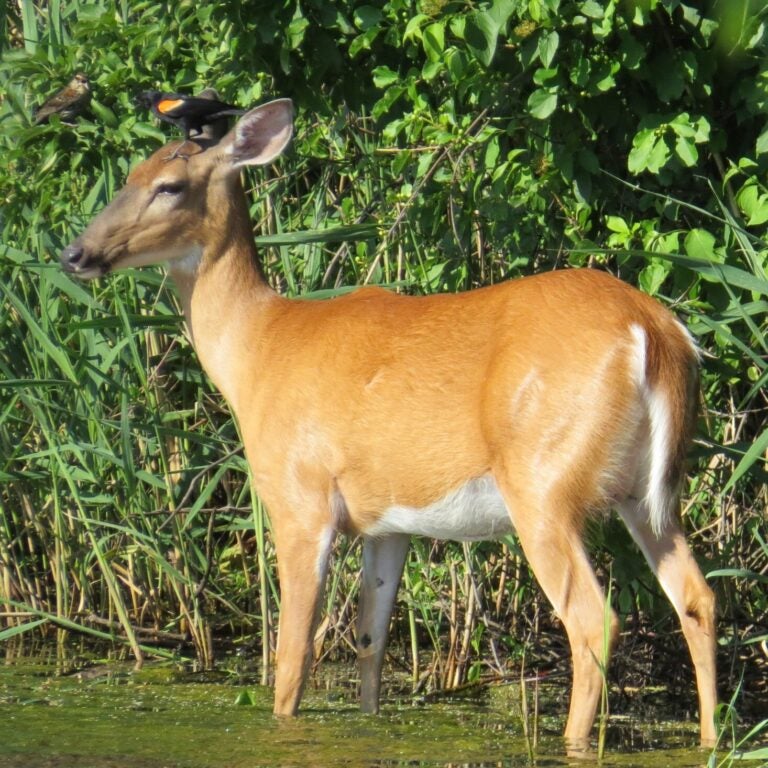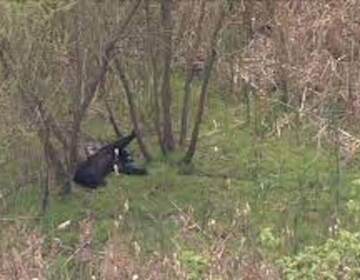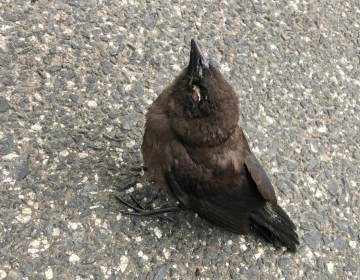It’s a conundrum: New Jersey’s deer population is dropping, but complaints over deer destruction are on the rise
Too many deer are causing too much damage in New Jersey, officials say.

Deer are popping up everywhere in New Jersey. (Photo courtesy of Gail Schumm)
From Camden and Cherry Hill to Trenton and the Jersey Shore, what about life in New Jersey do you want WHYY News to cover? Let us know.
White-tailed deer are everywhere in New Jersey, standing in fields, grazing next to roads, and even strolling through suburban front lawns and backyards in broad daylight.
Brian Schumm, an assistant biologist with the State Division of Fish and Wildlife, which is part of the Bureau of Wildlife Management, said that complaints about white-tailed deer are on the rise.
“There just seems to be too many deer, there seems to be too much damage,” he said.
And too many deer is a problem.
“With public safety we’re really thinking about deer-vehicle collisions, which occasionally are fatal, and tick-borne diseases,” Schumm said.
The other problem is ticks that often feed on deer and are transmitted by the animals as they wander into populated areas. These then lead to tick-related diseases in pets and humans.
Liz Thompson, a research associate with the New Jersey Farm Bureau said besides destroying flower and vegetable gardens, deer also pose a serious agricultural threat.
She said the Farm Bureau used drone technology and conducted an infrared study of areas near farmlands. The findings were shocking, she said.
“Biologists will say that five to 15 deer per square mile is sustainable, and we found areas that had more than 200 in some cases,” she said.
She said deer will eat whatever is most convenient, and a big field of produce or corn is an easy meal for them.
A report by Rutgers University’s School of Environmental and Biological Sciences found annual economic losses to high-value agricultural crops in New Jersey from deer damage total more than $15 million.
Thompson said a Farm Bureau survey found 25% of farmers abandoned parcels of farming land because of the deer pressure.
She said farmers are frequently frustrated trying to control local deer populations. “The deer can simply hide in these places that they can’t be hunted, and then at some point when it’s safe they come back to the fields and they eat again,” she said.
According to official estimates, the deer population in the Garden State is trending downward, now standing at 115,000, which is lower than it used to be, but Schumm said that total is based on hunter harvest data.
“So if we have areas of the state, suburban areas, urban areas, which we do get a lot of complaints about deer from, there’s obviously less hunter access to those areas,” he said.
He said the population estimate is probably accurate for parts of the state where hunting is permitted, but inaccurate for areas where hunting is reduced or prohibited.
Less interest in hunting
Schumm said that there is a steady decline in the number of hunters, and that could be a problem in mitigating the excessive deer population.
He pointed out that the average age of hunters in New Jersey continues to get older, and young people do not seem to be interested.
“It seems that our youth, with this technological revolution that we’re in, are a little bit less interested, and a little bit less familiar with the outdoors,” he said.
Schumm said the New Jersey Division of Fish and Wildlife is taking steps to address the deer conundrum, by allowing archery hunting in closer proximity to populated areas.
He said normally deer hunters using a bow and arrow cannot be within 150 feet of a building without authorization.
“There’s some amount of permissions that can be granted, generally it requires a little bit more oversight from communities, maybe they issue permits to the hunters so they know who is out there and when they’re out there,” he said.
Schumm said if a town is overrun with deer, special hunting permits that require more oversight can be issued. During approved firearms deer hunting season, Fish and Wildlife rules specify hunters may not be closer to a building than 450 feet.
Thompson said the Farm Bureau is working with a group called Hunters Helping the Hungry that helps supply venison meat to food banks across Jersey. She said the partnership assists those in need and incentivizes hunting in areas where deer populations are a problem.
According to Schumm, every deer that is “harvested” must be reported to the state, and over the past 10 years between 35,000 and 50,000 deer have been killed annually by hunters.
If New Jersey residents encounter nuisance deer situations he recommends they contact local officials and start a dialogue about what can be done.
Several municipalities in the Garden State recently applied for and received grant money to conduct drone surveys of their local deer populations, to aid in making appropriate mitigation decisions. Schumm said the division is hoping such grants will continue to be available moving forward.

Get daily updates from WHYY News!
WHYY is your source for fact-based, in-depth journalism and information. As a nonprofit organization, we rely on financial support from readers like you. Please give today.




